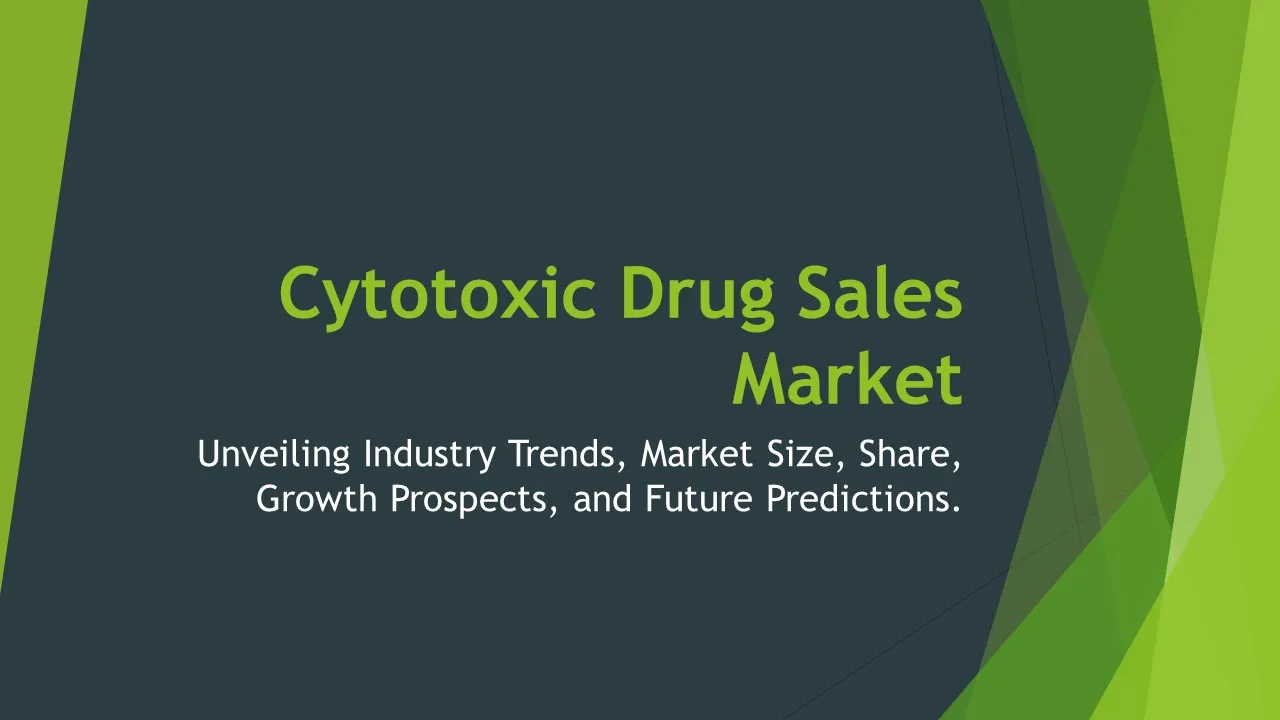Emission Control Catalyst
Emission Control Catalyst Market Segments - by Product Type (Palladium-based Catalysts, Platinum-based Catalysts, Rhodium-based Catalysts, Zeolite-based Catalysts, Base Metal Catalysts), Application (Automotive, Industrial, Marine, Aerospace, Others), Distribution Channel (OEMs, Aftermarket), Ingredient Type (Palladium, Platinum, Rhodium, Zeolite, Base Metals), and Region (North America, Europe, Asia Pacific, Latin America, Middle East & Africa) - Global Industry Analysis, Growth, Share, Size, Trends, and Forecast 2025-2035
- Report Preview
- Table Of Content
- Segments
- Methodology
Emission Control Catalyst Market Outlook
The global emission control catalyst market is anticipated to reach approximately USD 30 billion by 2035, growing at a compound annual growth rate (CAGR) of around 6.5% during the forecast period from 2025 to 2035. This growth is significantly driven by stringent government regulations aimed at reducing vehicular emissions, coupled with the increasing demand for cleaner and more efficient automotive technologies. Furthermore, innovation in catalyst formulations and advancements in catalytic converter designs are fostering market expansion. The heightened awareness surrounding air quality and environmental sustainability is prompting industries to adopt emission control solutions aggressively, thereby further propelling market growth.
Growth Factor of the Market
The emission control catalyst market is primarily influenced by the growing concern over environmental pollution and the legislative measures taken by various governments worldwide to curb emissions. The rapid industrialization and urbanization have led to increased vehicular traffic, which in turn escalates pollutant emissions. Therefore, the introduction of stringent regulations such as the Euro 6 standards in Europe and EPA regulations in the United States has compelled manufacturers to integrate advanced emission control technologies. Additionally, the automotive sector is undergoing a significant transformation with the development of electric vehicles (EVs) and hybrid electric vehicles (HEVs), which also require advanced catalysts for optimizing their performance. These factors are not only driving demand but also encouraging research and development in catalyst technologies, further bolstering market growth.
Key Highlights of the Market
- Growing regulatory framework aimed at reducing vehicular emissions is a primary market driver.
- Technological advancements in catalyst formulations are enhancing effectiveness in emission reduction.
- Rising adoption of electric and hybrid vehicles is shifting focus toward advanced catalyst systems.
- Increasing investment in R&D for catalyst development is expected to create new market opportunities.
- Asia-Pacific region is anticipated to witness significant growth due to rapid industrialization and urbanization.
By Product Type
Palladium-based Catalysts:
Palladium-based catalysts have emerged as a popular choice in the emission control catalyst market due to their high efficiency in converting harmful gases into less harmful substances. These catalysts are particularly effective in reducing nitrogen oxides (NOx) and hydrocarbons (HC) emissions. The automotive sector, especially, benefits from palladium catalysts given their ability to operate efficiently at lower temperatures. This characteristic makes them ideal for both gasoline and diesel engines, thereby expanding their application versatility. Furthermore, the palladium market is witnessing price fluctuations, which are influenced by supply-demand dynamics, impacting the overall catalyst pricing and accessibility.
Platinum-based Catalysts:
Platinum-based catalysts are recognized for their robustness and effectiveness in facilitating a wide range of chemical reactions. In the context of emission control, these catalysts play a critical role in reducing carbon monoxide (CO) and NOx emissions from automotive and industrial applications. The durability of platinum catalysts allows them to maintain performance over time, which is vital for vehicles that operate under various conditions. However, the high cost associated with platinum can be a barrier for some manufacturers; nevertheless, its efficiency justifies the investment for many applications, particularly in high-performance and luxury vehicles.
Rhodium-based Catalysts:
Rhodium-based catalysts are essential components in the three-way catalytic converters used in gasoline vehicles. They are particularly effective in reducing NOx emissions while simultaneously oxidizing CO and HC. The unique properties of rhodium, such as its high thermal stability and resistance to poisoning, make it a preferable option for many automotive applications. Despite their high cost, the effectiveness of rhodium in emission control has solidified its place in the market. As vehicle emission standards tighten globally, the demand for rhodium catalysts is expected to increase significantly, leading to potential supply challenges given its limited availability.
Zeolite-based Catalysts:
Zeolite-based catalysts are gaining traction in the emission control market due to their structural properties that allow for selective adsorption and catalytic activity. These catalysts are primarily used in industrial applications for processing exhaust gases. Their ability to withstand high temperatures and corrosive environments makes them suitable for various industrial processes. Moreover, zeolites can be synthesized to enhance specific catalytic properties, providing flexibility in applications. The increasing focus on sustainable industrial practices and reduction of harmful emissions is likely to drive the adoption of zeolite-based catalysts in the coming years.
Base Metal Catalysts:
Base metal catalysts, including nickel and copper, are emerging as cost-effective alternatives to precious metal catalysts in the emission control sector. These catalysts have shown promising results in reducing emissions from various industrial processes, particularly in applications where cost constraints are a significant concern. The growing emphasis on reducing operational costs without compromising on emission standards is propelling the market for base metal catalysts. Additionally, advancements in technology are improving the efficiency and effectiveness of these catalysts, making them more attractive to manufacturers looking for viable emission control solutions.
By Application
Automotive:
The automotive sector is the largest application segment for emission control catalysts, driven by stringent regulations aimed at reducing harmful emissions from vehicles. Catalytic converters equipped with various catalysts help in the conversion of toxic gases such as CO, NOx, and HC into less harmful emissions. With the rising production of gasoline and diesel vehicles, as well as the increasing adoption of electric and hybrid vehicles, the demand for automotive catalysts is expected to grow significantly. Manufacturers are focusing on developing more efficient catalysts that can meet the evolving emission norms, thereby enhancing vehicle performance and compliance with regulations.
Industrial:
In industrial applications, emission control catalysts are utilized to manage exhaust emissions from manufacturing processes and power plants. The industrial sector is facing increasing pressure to comply with environmental regulations, which has led to a surge in the adoption of emission control technologies. Catalysts play a crucial role in treating flue gases and ensuring minimal environmental impact. Industries are investing in state-of-the-art catalytic systems to enhance process efficiency while reducing emissions. The ongoing trends toward sustainability and responsible industrial practices are expected to further boost the demand for emission control catalysts in this sector.
Marine:
The marine industry is experiencing a shift in emission control due to the implementation of international regulations aimed at reducing sulfur emissions from ships. Emission control catalysts are becoming essential for marine engines to comply with these stringent standards, particularly in emission control areas (ECAs). Catalysts used in marine applications facilitate the reduction of SOx and NOx emissions, contributing to cleaner oceans and air quality. As the maritime industry seeks to embrace greener technologies and solutions, the demand for effective emission control catalysts is likely to increase, encouraging innovation and investment in new catalytic solutions.
Aerospace:
The aerospace sector, while less prominent than automotive and industrial applications, still necessitates the use of emission control catalysts to meet regulatory standards related to aircraft emissions. These catalysts are crucial in minimizing NOx and particulate emissions from aircraft engines. As the aerospace industry faces pressure to reduce its environmental footprint, manufacturers are investing in research and development to create more efficient catalysts for aviation applications. The increasing focus on sustainability and reducing carbon emissions in aerospace is expected to drive growth in this market segment.
Others:
This segment encompasses various niche applications for emission control catalysts, including residential heating systems and small-scale power generation. These applications often utilize specialized catalysts to manage emissions effectively. As awareness of air quality and pollution issues continues to grow, the demand for emission control solutions in these less traditional applications is expected to increase. The development of customized catalysts tailored to specific needs could provide significant opportunities in this segment, contributing to overall market growth.
By Distribution Channel
OEMs:
The original equipment manufacturers (OEMs) segment is a critical distribution channel for emission control catalysts, particularly in the automotive industry. OEMs integrate these catalysts into vehicles during the manufacturing process to ensure compliance with emissions regulations from the outset. This channel benefits from long-term partnerships between manufacturers and automakers, fostering collaboration on catalyst design and efficiency improvements. As vehicle production continues to grow, the OEMs distribution channel is expected to remain a significant contributor to the overall market for emission control catalysts.
Aftermarket:
The aftermarket segment represents a key channel for emission control catalysts, particularly as existing vehicles undergo repairs or modifications to meet updated emissions standards. The growth of the automotive aftermarket is driven by the increasing age of vehicles on the road, necessitating replacement or upgraded catalyst systems. This segment provides opportunities for manufacturers to supply catalysts compatible with a wide range of vehicle models. Additionally, the rising awareness of environmental issues among consumers has contributed to the demand for aftermarket solutions that enhance emissions control, further boosting this segment's growth.
By Ingredient Type
Palladium:
Palladium is a primary ingredient in many emission control catalysts, particularly for automotive applications. Its unique properties enable it to facilitate reactions that convert harmful emissions into less hazardous substances efficiently. The demand for palladium in catalysts is primarily driven by regulations requiring lower emissions from vehicles, making it an essential component in catalytic converters. However, the volatility in palladium prices can impact the overall manufacturing costs, prompting manufacturers to explore alternative formulations or combinations with other metals to optimize performance and cost-effectiveness.
Platinum:
Platinum is another key ingredient widely used in emission control catalysts due to its remarkable catalytic properties. It is particularly effective in oxidizing carbon monoxide and hydrocarbons, making it indispensable in automotive applications. The high cost of platinum presents challenges for manufacturers, but its efficiency often justifies the expense, especially in high-performance vehicles. Innovations in catalyst design are aimed at maximizing platinum use efficiency while minimizing overall quantities required, which can help mitigate price volatility and maintain performance standards in emission control applications.
Rhodium:
Rhodium is utilized in emission control catalysts for its exceptional ability to reduce NOx emissions, particularly in gasoline engines. Its high efficiency makes it a vital component in three-way catalytic converters, which are crucial for meeting stringent emissions standards. Despite its high cost and limited availability, the demand for rhodium in catalysts is significant, particularly as regulatory pressures to reduce automotive emissions intensify. The market is witnessing ongoing research into alternative catalyst formulations to reduce dependence on rhodium while maintaining excellent performance in emission control.
Zeolite:
Zeolite, a naturally occurring mineral, is increasingly incorporated into emission control catalysts due to its unique adsorption properties. It is particularly useful in industrial applications for gas processing and emission reduction. The versatility of zeolite allows for the design of customized catalysts tailored to specific emission control needs. As industries face stricter environmental regulations, the demand for zeolite-based catalysts is expected to grow, providing manufacturers with opportunities to innovate and develop efficient emission control solutions.
Base Metals:
Base metals, such as nickel and copper, are emerging as cost-effective alternatives in the development of emission control catalysts. These metals are gaining popularity due to their lower costs and acceptable catalytic properties compared to precious metals. As manufacturers seek ways to reduce production costs while meeting emissions standards, base metal catalysts are becoming increasingly attractive. Ongoing advancements in catalyst technology are improving the performance of base metal formulations, paving the way for their broader adoption in various applications, particularly in industrial sectors.
By Region
The emission control catalyst market is witnessing robust growth across various regions, with North America and Europe being the dominant players due to stringent regulatory frameworks and a strong automotive industry. North America is projected to account for approximately USD 10 billion of the total market by 2035, growing at a CAGR of 5.5%. The automotive sector in this region is increasingly adopting advanced emission control technologies to comply with the Environmental Protection Agency (EPA) standards, driving demand for effective catalysts. Furthermore, initiatives aimed at promoting sustainable transport solutions are likely to further propel market growth.
In Europe, the emission control catalyst market is also on an upward trajectory, largely driven by the European Union's stringent emissions regulations aimed at reducing the carbon footprint of vehicles. The region is expected to generate a revenue of around USD 9 billion by 2035, as automakers invest heavily in developing technologies that meet the Euro 7 standards. The adoption of electric and hybrid vehicles is further influencing the market dynamics, with manufacturers seeking advanced catalysts to optimize performance. As environmental concerns continue to shape policies, the growth of the emission control catalyst market in Europe is anticipated to remain strong.
Opportunities
The emission control catalyst market is poised for significant opportunities, particularly in the context of growing global environmental concerns. With governments worldwide implementing stricter emissions regulations, there is an increasing demand for innovative catalyst solutions across multiple sectors. The shift towards electrification in the automotive industry, characterized by the rise of electric vehicles (EVs) and hybrid vehicles (HEVs), also presents a unique opportunity for the catalyst market. Manufacturers are focusing on developing catalysts that enhance the performance of these vehicles while ensuring compliance with emissions standards. As the automotive industry evolves, there will be ample opportunity for catalyst manufacturers to innovate and adapt their products to meet changing demands.
Additionally, expanding industrial sectors and the need for efficient emission control solutions in industrial processes represent another substantial opportunity within the market. As industries seek to minimize their environmental impact and adhere to regulatory requirements, the demand for sophisticated emission control catalysts will continue to rise. Moreover, emerging markets in Asia-Pacific and Latin America are experiencing rapid industrialization, driving the need for effective emission control technologies. Companies operating in the catalyst sector can capitalize on these developments to expand their market presence and enhance their offerings in response to regional demands.
Threats
Despite the promising growth outlook for the emission control catalyst market, several threats could potentially hinder progress. One significant threat is the volatility in the prices of precious metals, such as palladium, platinum, and rhodium, which are critical components in many catalysts. Sudden price fluctuations can affect the overall manufacturing costs and profitability for catalyst manufacturers. Furthermore, the reliance on a limited number of suppliers for these materials increases vulnerability to supply chain disruptions, which can have cascading effects on market dynamics. Additionally, the emergence of alternative technologies, such as direct injection systems and other methods to control emissions, could pose competitive threats to conventional catalyst solutions in the automotive and industrial sectors.
Another threat to the emission control catalyst market is the potential for regulatory changes and shifting environmental policies. Changes in legislation can dramatically influence market demand and the types of technologies that manufacturers need to develop. Continuous advancements in emissions reduction technologies may require ongoing investment in research and development, straining the financial resources of companies operating in this space. As industries adapt to evolving environmental expectations, catalyst manufacturers must remain agile and responsive to mitigate these threats effectively.
Competitor Outlook
- Johnson Matthey
- BASF SE
- Umicore
- Honeywell International Inc.
- Corning Incorporated
- NGK Insulators, Ltd.
- Continental AG
- Clariant AG
- Albemarle Corporation
- McLaren Applied Technologies
- Thyssenkrupp AG
- POSCO Chemical
- Haldor Topsoe A/S
- W.R. Grace & Co.
- Shree Renuka Sugars Limited
The emission control catalyst market is characterized by a competitive landscape populated by several key players who are driving technological advancements and innovations. Major companies like Johnson Matthey and BASF SE are at the forefront, focusing on research and development to enhance catalyst performance and meet stringent environmental regulations. Johnson Matthey, a leading global player, has established itself as a pioneer in the development of advanced catalysts that cater to both automotive and industrial applications. Their expertise in precious metal catalysts positions them advantageously in a market that increasingly values efficiency and sustainability.
Another prominent player, Umicore, specializes in materials technology and is recognized for its strong commitment to sustainability. The company has been actively involved in developing innovative emissions control solutions that address the growing concerns surrounding air quality and environmental impact. With a diversified portfolio that extends beyond automotive applications, Umicore is well-positioned to capitalize on opportunities in various sectors seeking emission reduction solutions. Their emphasis on establishing long-term partnerships with automotive manufacturers enhances their competitive edge in the market.
Additionally, companies like Corning Incorporated are leveraging their expertise in substrate technology to develop advanced catalytic converter systems. Corning's extensive experience in materials science enables them to create innovative products that offer high performance in emission control. Their focus on optimizing catalyst formulations and improving substrate technology is driving efficiency in the automotive sector. Furthermore, their strategic collaborations with automakers facilitate the development of tailored solutions that meet specific emission standards, further solidifying their presence in the market.
1 Appendix
- 1.1 List of Tables
- 1.2 List of Figures
2 Introduction
- 2.1 Market Definition
- 2.2 Scope of the Report
- 2.3 Study Assumptions
- 2.4 Base Currency & Forecast Periods
3 Market Dynamics
- 3.1 Market Growth Factors
- 3.2 Economic & Global Events
- 3.3 Innovation Trends
- 3.4 Supply Chain Analysis
4 Consumer Behavior
- 4.1 Market Trends
- 4.2 Pricing Analysis
- 4.3 Buyer Insights
5 Key Player Profiles
- 5.1 BASF SE
- 5.1.1 Business Overview
- 5.1.2 Products & Services
- 5.1.3 Financials
- 5.1.4 Recent Developments
- 5.1.5 SWOT Analysis
- 5.2 Umicore
- 5.2.1 Business Overview
- 5.2.2 Products & Services
- 5.2.3 Financials
- 5.2.4 Recent Developments
- 5.2.5 SWOT Analysis
- 5.3 Clariant AG
- 5.3.1 Business Overview
- 5.3.2 Products & Services
- 5.3.3 Financials
- 5.3.4 Recent Developments
- 5.3.5 SWOT Analysis
- 5.4 Continental AG
- 5.4.1 Business Overview
- 5.4.2 Products & Services
- 5.4.3 Financials
- 5.4.4 Recent Developments
- 5.4.5 SWOT Analysis
- 5.5 POSCO Chemical
- 5.5.1 Business Overview
- 5.5.2 Products & Services
- 5.5.3 Financials
- 5.5.4 Recent Developments
- 5.5.5 SWOT Analysis
- 5.6 Johnson Matthey
- 5.6.1 Business Overview
- 5.6.2 Products & Services
- 5.6.3 Financials
- 5.6.4 Recent Developments
- 5.6.5 SWOT Analysis
- 5.7 Thyssenkrupp AG
- 5.7.1 Business Overview
- 5.7.2 Products & Services
- 5.7.3 Financials
- 5.7.4 Recent Developments
- 5.7.5 SWOT Analysis
- 5.8 W.R. Grace & Co.
- 5.8.1 Business Overview
- 5.8.2 Products & Services
- 5.8.3 Financials
- 5.8.4 Recent Developments
- 5.8.5 SWOT Analysis
- 5.9 Haldor Topsoe A/S
- 5.9.1 Business Overview
- 5.9.2 Products & Services
- 5.9.3 Financials
- 5.9.4 Recent Developments
- 5.9.5 SWOT Analysis
- 5.10 Corning Incorporated
- 5.10.1 Business Overview
- 5.10.2 Products & Services
- 5.10.3 Financials
- 5.10.4 Recent Developments
- 5.10.5 SWOT Analysis
- 5.11 NGK Insulators, Ltd.
- 5.11.1 Business Overview
- 5.11.2 Products & Services
- 5.11.3 Financials
- 5.11.4 Recent Developments
- 5.11.5 SWOT Analysis
- 5.12 Albemarle Corporation
- 5.12.1 Business Overview
- 5.12.2 Products & Services
- 5.12.3 Financials
- 5.12.4 Recent Developments
- 5.12.5 SWOT Analysis
- 5.13 Shree Renuka Sugars Limited
- 5.13.1 Business Overview
- 5.13.2 Products & Services
- 5.13.3 Financials
- 5.13.4 Recent Developments
- 5.13.5 SWOT Analysis
- 5.14 Honeywell International Inc.
- 5.14.1 Business Overview
- 5.14.2 Products & Services
- 5.14.3 Financials
- 5.14.4 Recent Developments
- 5.14.5 SWOT Analysis
- 5.15 McLaren Applied Technologies
- 5.15.1 Business Overview
- 5.15.2 Products & Services
- 5.15.3 Financials
- 5.15.4 Recent Developments
- 5.15.5 SWOT Analysis
- 5.1 BASF SE
6 Market Segmentation
- 6.1 Emission Control Catalyst Market, By Application
- 6.1.1 Automotive
- 6.1.2 Industrial
- 6.1.3 Marine
- 6.1.4 Aerospace
- 6.1.5 Others
- 6.2 Emission Control Catalyst Market, By Product Type
- 6.2.1 Palladium-based Catalysts
- 6.2.2 Platinum-based Catalysts
- 6.2.3 Rhodium-based Catalysts
- 6.2.4 Zeolite-based Catalysts
- 6.2.5 Base Metal Catalysts
- 6.3 Emission Control Catalyst Market, By Ingredient Type
- 6.3.1 Palladium
- 6.3.2 Platinum
- 6.3.3 Rhodium
- 6.3.4 Zeolite
- 6.3.5 Base Metals
- 6.1 Emission Control Catalyst Market, By Application
7 Competitive Analysis
- 7.1 Key Player Comparison
- 7.2 Market Share Analysis
- 7.3 Investment Trends
- 7.4 SWOT Analysis
8 Research Methodology
- 8.1 Analysis Design
- 8.2 Research Phases
- 8.3 Study Timeline
9 Future Market Outlook
- 9.1 Growth Forecast
- 9.2 Market Evolution
10 Geographical Overview
- 10.1 Europe - Market Analysis
- 10.1.1 By Country
- 10.1.1.1 UK
- 10.1.1.2 France
- 10.1.1.3 Germany
- 10.1.1.4 Spain
- 10.1.1.5 Italy
- 10.1.1 By Country
- 10.2 Asia Pacific - Market Analysis
- 10.2.1 By Country
- 10.2.1.1 India
- 10.2.1.2 China
- 10.2.1.3 Japan
- 10.2.1.4 South Korea
- 10.2.1 By Country
- 10.3 Latin America - Market Analysis
- 10.3.1 By Country
- 10.3.1.1 Brazil
- 10.3.1.2 Argentina
- 10.3.1.3 Mexico
- 10.3.1 By Country
- 10.4 North America - Market Analysis
- 10.4.1 By Country
- 10.4.1.1 USA
- 10.4.1.2 Canada
- 10.4.1 By Country
- 10.5 Middle East & Africa - Market Analysis
- 10.5.1 By Country
- 10.5.1.1 Middle East
- 10.5.1.2 Africa
- 10.5.1 By Country
- 10.6 Emission Control Catalyst Market by Region
- 10.1 Europe - Market Analysis
11 Global Economic Factors
- 11.1 Inflation Impact
- 11.2 Trade Policies
12 Technology & Innovation
- 12.1 Emerging Technologies
- 12.2 AI & Digital Trends
- 12.3 Patent Research
13 Investment & Market Growth
- 13.1 Funding Trends
- 13.2 Future Market Projections
14 Market Overview & Key Insights
- 14.1 Executive Summary
- 14.2 Key Trends
- 14.3 Market Challenges
- 14.4 Regulatory Landscape
Segments Analyzed in the Report
The global Emission Control Catalyst market is categorized based on
By Product Type
- Palladium-based Catalysts
- Platinum-based Catalysts
- Rhodium-based Catalysts
- Zeolite-based Catalysts
- Base Metal Catalysts
By Application
- Automotive
- Industrial
- Marine
- Aerospace
- Others
By Ingredient Type
- Palladium
- Platinum
- Rhodium
- Zeolite
- Base Metals
By Region
- North America
- Europe
- Asia Pacific
- Latin America
- Middle East & Africa
Key Players
- Johnson Matthey
- BASF SE
- Umicore
- Honeywell International Inc.
- Corning Incorporated
- NGK Insulators, Ltd.
- Continental AG
- Clariant AG
- Albemarle Corporation
- McLaren Applied Technologies
- Thyssenkrupp AG
- POSCO Chemical
- Haldor Topsoe A/S
- W.R. Grace & Co.
- Shree Renuka Sugars Limited
- Publish Date : Jan 21 ,2025
- Report ID : PH-68469
- No. Of Pages : 100
- Format : |
- Ratings : 4.5 (110 Reviews)









